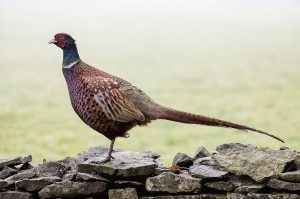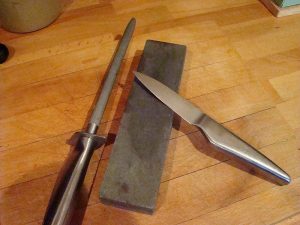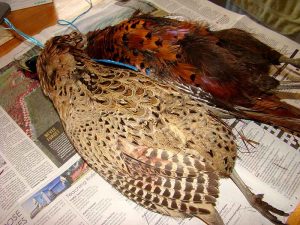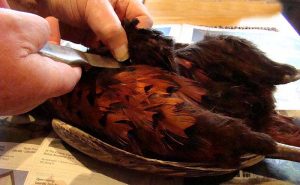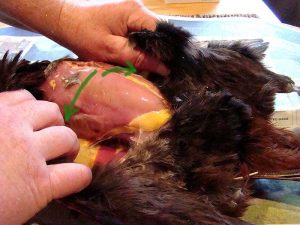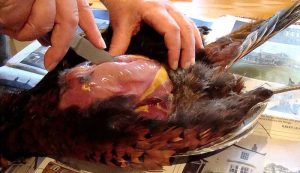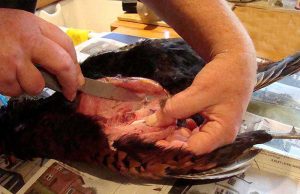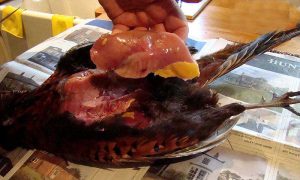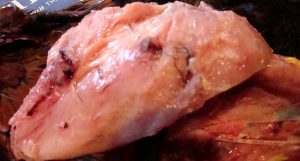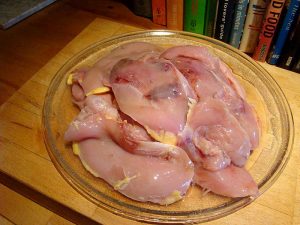Pheasant – Preparing a pheasant – the easy way – for a casserole
About
Pheasant is native to Asia and has been widely introduced as a game bird. Pheasant is just about as free range and organic as you can get – being essentially a wild bird.
Very little fat and basically a natural diet – besides some crushed corn to help them on. They are “farmed” in a sense, like deer, but are free to roam and take their chances with the guns – The shooting season is Oct 1 – Feb 1 UK. To boost stocks they are usually introduced as poults and fed up to release free ranging in the wild. Over the last few years pheasant shoots have taken off (no pun intended) as a good way to supplement farming incomes off the land over winter. Nearly all game birds such as pheasants will have been shot and may contain pellets – don’t let this put you off – most pellets can be found before cooking.
If you’re not going to roast it as a whole bird…
Preparing a pheasant can be a time consuming and messy task.
If you’re not going to roast it, like a chicken, then there is no need to remove the feathers (plucking) or bother with the legs.
So, for a casserole we can just remove the breasts – easily.
The same technique can be used for partridge etc.
Pheasant meat can be very dry and hard if care is not taken with the cooking. The legs in particular are lacking in meat and on the male cock pheasant they can be sinewy (they spend a lot of time on the ground running).
I find casseroling the meat is the best way to easily use pheasant to make a tasty meal. This can be as a traditional English casserole (if there is one), a curry, Goulash or Moroccan or any where a long cooking time is used – around 1.5 to 2 hours.
Not for the squeamish… Stripping out the breasts…
Click an image to enlarge it.
Knives – you need a good quality very sharp knife – don’t even start if you haven’t got one…
You need a good quality very sharp knife – don’t even start if you haven’t got one – it’ll be a mess.
Above – I use a Jean Patrique 3 1/2 inch paring knife (or equivalent eg. Sabatier etc.) – don’t use a serrated one – and I suggest you use a sharpening stone and steel to keep the edge as in the picture above.
The birds
Usually they come in a pair called a brace – which will normally be a male cock and female hen.
First insertion
Above – Open the bird’s legs a little and pinch the skin on the breast bone.
Insert the knife into the pinch to cut the skin large enough to get 2 or 3 fingers in.
Opening the bird
Above – Insert your thumbs / fingers into the cut just made and pull the skin down each side – a bit like opening a leather brief case.
You will need to firmly push the legs apart to accomplish this as you are pulling the skin apart.
Make sure you pull the skin right back and from around the crop – at the head end – as below.
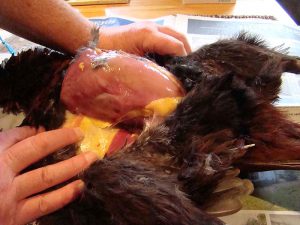
Removing the breast meat
Above – On one side – insert the knife close to the breast bone – running the knife along the rib cage – gently but firmly – skirting the rib cage. Repeat for the other side breast.
Take care not to cut into the rib cage or the crop or puncture any of the innards. You may have to discard the bird if you do due to possible infections from intestinal matter or faeces.
Above – Running the knife along and down the rib cage to – remove the breast as one piece – seen below.
(The yellow is the fat.)
Above – the full breast removed.
Above – Where the pellets have entered the breast often some of the external feathers will have been carried through. Wash the breast in cold water and pull the feathers out and any blood clotting. You can also find any pellets that have failed to pass through by feeling for them by gently rubbing the breast between the thumb and fingers.
Above – The finished article – a plate of pheasant breasts ready for cooking.
Next – the recipes for the casseroles…
